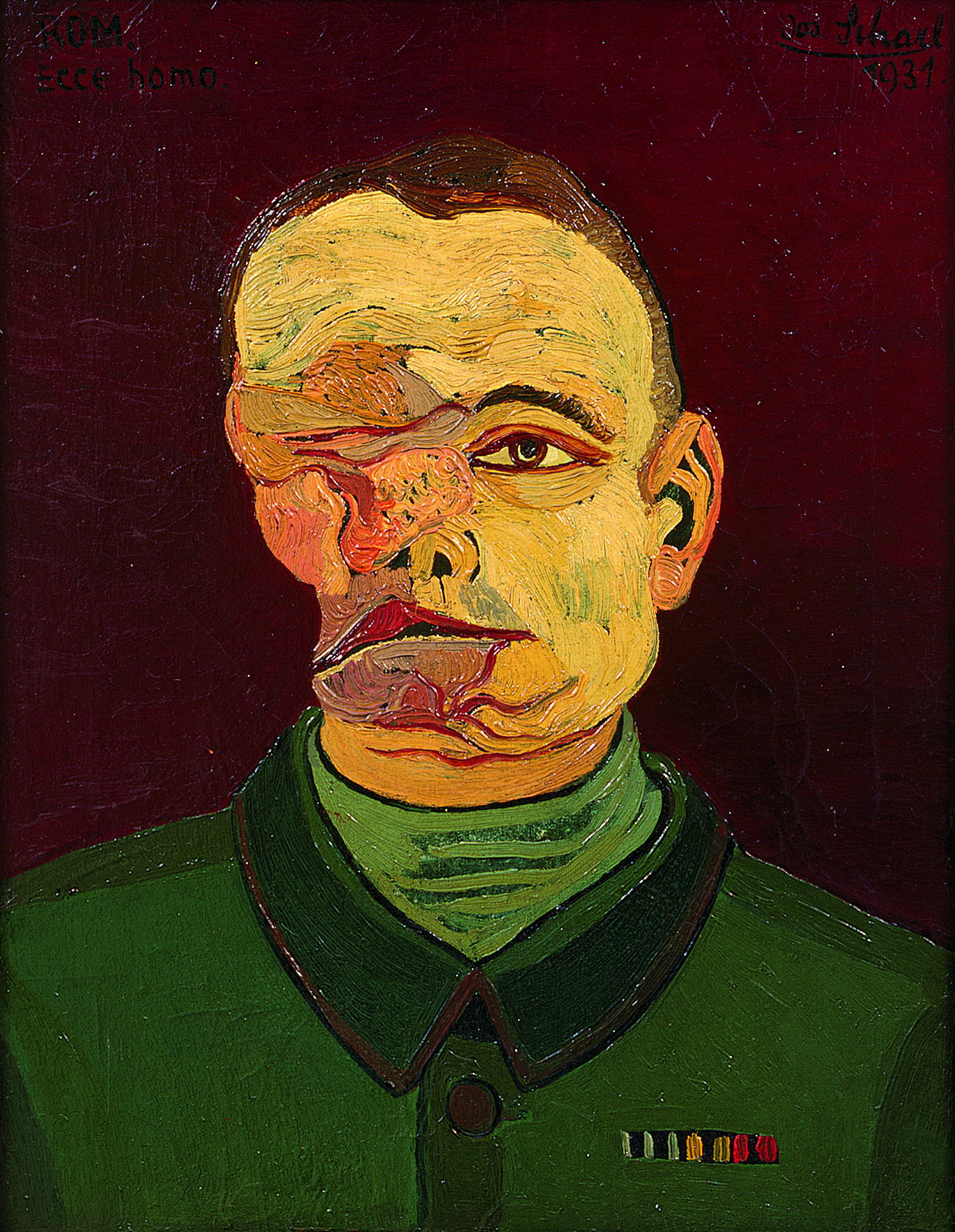Josef Scharl
Ecce homo, 1931
Artist
Josef Scharl
Title
Ecce homo
Year of creation
1931
Technique and dimensions
oil on canvas, 49 x 43 cm
Year of acquisition
2009
The painting "Ecce homo / The Mutilated" by Josef Scharl shows the portrait of a veteran from the First World War, the right side of his face is disfigured by a war injury. From the darkness of the background, the head shines dramatically illuminated above the olive-colored uniform jacket and the green scarf or sweater, with the intact half of the face shown in bright yellow, while the ear and the mutilated part are modeled into a fleshy mass with the red paint mixed in are. The color scale from green to yellow to red appears as a reflection on the former soldier's chest in a row of honorary badges. Although the picture is rather small in format, it is incredibly impressive due to its concentration, coloring and painting style.
The motif has an autobiographical and historical background. The Munich artist Josef Scharl was buried in a trench near Verdun during the First World War. After he was dug up, he was unable to walk for a while, his right arm remained paralyzed for two years, and he suffered from severe headaches throughout his life. After the end of the war, Scharl, a trained decorative painter, painter and gilder, studied at the Munich Art Academy, traveled to Italy and intensively studied the work of Vincent van Gogh, whose impasto style he adopted. As a representative of a late expressionist style, Scharl was particularly concerned with the social injustices of his time. Despite the critical tendency of his painting, he was successful on the market and received a scholarship to the Villa Massimo in Rome in 1931/32.
“Ecce homo / The Mutilated” was probably written during this stay in Rome. The motif may be based on a photograph from the book "War on War", in which the anarcho-pacifist Ernst Friedrich documented the horrors of war in 1924, including portraits of wounded, disfigured and mutilated soldiers. In 1925, Friedrich founded the Anti-War Museum in Berlin. In this historical context, the painting follows other depictions of war disabled people, such as Otto Dix's "Skat Players" from 1920. In contrast to the grotesque figuration and biting sharpness of Dix, Scharl offers a factual inventory in his picture. But this too meant criticism in a situation in which – as was the case in 1931 – militaristic tendencies were gaining strength again, which would bring with them another war.
In Scharl's depiction, the two halves of the face address seeing and not seeing. Seeing the war and being blinded by the war, moving towards the next war with all eyes or learning from the war experience, these options are open to the person who, on the one hand - "Ecce homo" - sees himself placed in the situation, but on the other hand is always called upon to do so to decide for yourself.
Dieter Scholz
